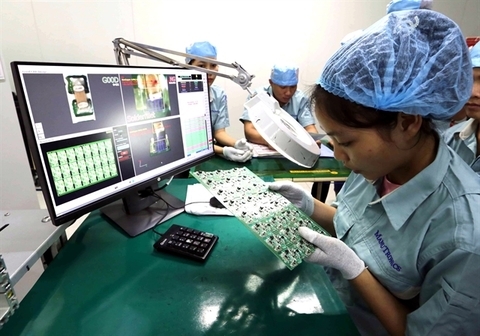vice president and general secretary at the Vietnam Association for Supporting Industries, talked about some recommendations to improve the competitiveness of related enterprises in the supply chain.
|
||
How do you assess the role of Resolution 115 in promoting the development of supporting industries?
The two highlights of the resolution are solutions in terms of credit and technical assistance relating to the automobile and supporting industries. The resolution clarifies incentives in terms of interest for short-term loans from credit organisations.
Regarding mid-term and long-term loans, the state will offset a part of interest compared to the existing interest level in order to support enterprises with products mentioned in list of those of supporting industries prioritised for development. In other countries, joining in the supply chain is a factor for enterprises to ensure loans – they only need a good business plan. Meanwhile, Vietnamese enterprises may have to mortgage off assets for obtaining loans.
There will be development of five technical centres – for electronics, mechanical, two for garments and textiles, and another for leather shoes. The move will be a spotlight to promote the development of supporting industries. However, maintaining the operation of these centres is a challenge because it takes large sums of money to invest in equipment and machinery, while they face risk of being downgraded and becoming obsolete after only a few years.
The state can’t spend money upgrading this machinery unless it enjoys support from large-scale groups.
The remaining solutions are quite practical, including building industrial zones for supporting industries to encourage formation of linked industrial clusters as well as establishment of manufacturing and assembly corporations similar to Truong Hai Auto Corporation and VinFast.
Which supporting industries should be prioritised for development?
Heavy and large equipment which is difficult and costly to import from overseas should be manufactured locally. The automobile industry is a sector that all foreign-invested enterprises should localise in order to enjoy the incentives and advantages of the market.
Thus, larger parts such as the underbody, body shell, and large plastic parts which usually cost a lot of capital for logistics and warehouses, and which suffer from tariffs if importing from overseas, will be prioritised.
Although the price of these mechanically-stamped products may not be very high, if enterprises can manufacture and provide to automobile manufacturers, it will be profitable for them.
While the output of supporting industries should be around 30,000-50,000 units per model, quantity of consumption is around 5,000-10,000 only at present. Thus, they need the support of the government to focus the consumption on several models only and enhance the performance of supporting industries.
Can you highlight some recommendations to improve product quality, reduce costs, and enhance competitiveness of local suppliers?
Quality of products in Vietnamese suppliers is good enough to compete with those of foreign-invested counterparts. However, their price is too high now. So the most important recommendation is to cut down most administrative checks to leave suppliers to carry out their business.
The number of local suppliers is still few, so a lot of jobs have to be outsourced overseas. Besides these, lending rates applied for them should be lowered. South Korean companies can borrow money at a lending rate of 1-2 per cent only, while local ones are suffering from rates of 5-7 per cent or more.
What should we do to reach the target of 2,000 supporting businesses by 2030?
The government should encourage startups related to the manufacturing industry. For example, the Japanese government exempts land rental for three years, removes corporate income tax, and taxes on purchasing or importing machines, as well as applying very preferential interest rates for them at 1-2 per cent.
Supporting industries follow the automobile industry. The annual consumption of the market is 400,000 units only, coming from 20 manufacturers and covering a variety of models. The costs of localised vehicles will be affordable if the output of each model is 50,000 units annually.
The best sales models in Vietnam, which are the Toyota Innova and Vios, reached 30,000 units per year. So the government should concentrate on promoting and increasing the demand for some models only by reducing the offering price, in order to raise the localisation rate of these models and strengthen local supporting industries. VIR
Minh Vu

Vietnam aims to have 2,000 supporting businesses
Prime Minister Nguyen Xuan Phuc has signed a resolution to promote the development of support industries with the aim of having 2,000 enterprises capable of directly supplying parts for multinational corporations in ten years.

Creating global connections for supporting industries
Companies that provide support to manufacturing and processing industries may have grown steadily in recent years but many are still struggling to connect to the global market.
